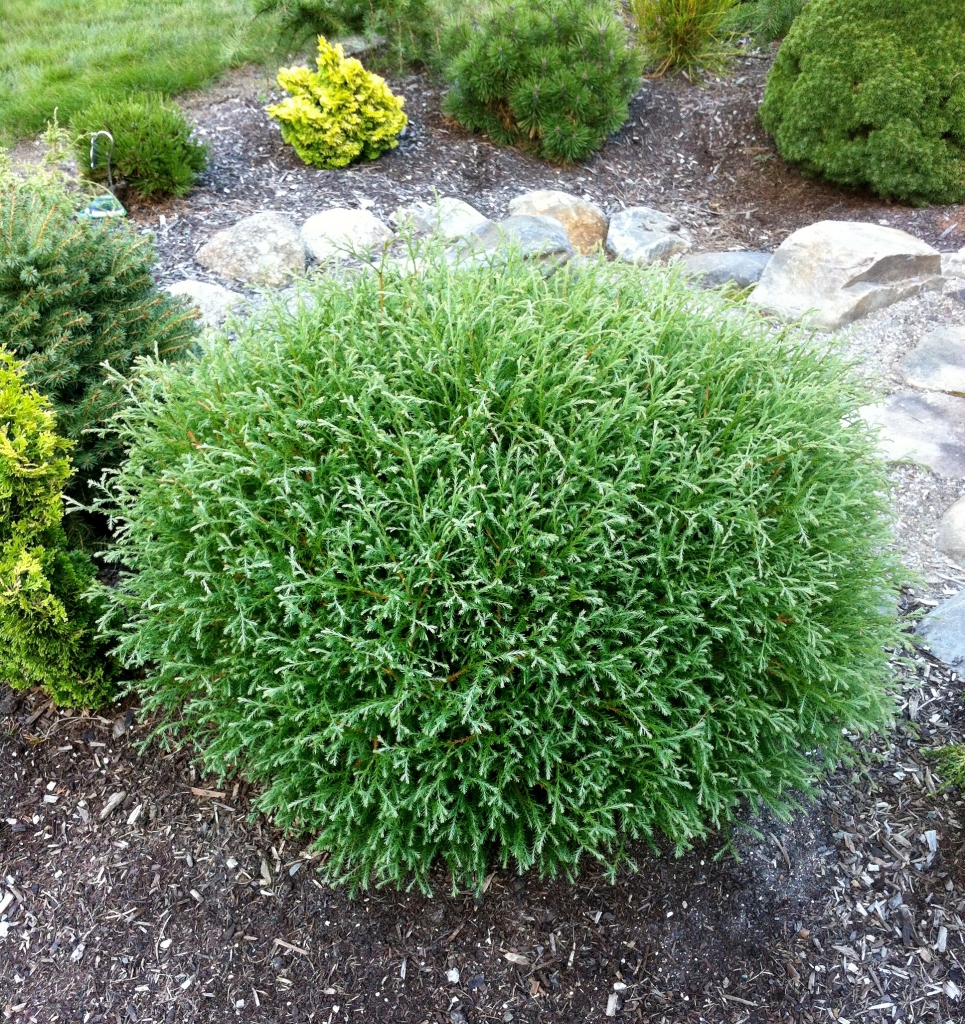The correct botanical name of this cultivar is Thuja occidentalis 'Linesville,' but the more colorful name Mr. Bowling Ball„¢ was attached to it for marketing purposes and it has crept into the nomenclature - although purists resist it. Because it's an Eastern Arborvitae it has all the generous cultural characteristics of the species plus a unique, nearly perfect round shape that requires no pruning and will stay dwarf, perhaps 30 inches (75 cm) at maturity. It also maintains its shape to the ground giving the appearance of a sphere sitting on the landscape.
This cultivar originated as a witch's broom found in the mid-1980s by ACS legend Joe Stupka, a nurseryman and propagator from Pulaski, Pennsylvania. He found the original broom in the Linesville Cemetery, Linesville, Pennsylvania. According to an article in American Nurseryman, when Joe found the original broom it was mostly dead with only a few twigs still alive. Because there was so little scion wood, Stupka grafted it and mounded peat moss up to the graft union. He later found the scion rooted above the graft in the peat moss. From this rooted cutting, all future plants were then propagated. Today this plant roots readily from cuttings.
Stupka called the cultivar 'Linesville' but under unknown circumstances, Joe Zampini of Lake County Nursery, Perry, Ohio, adopted the plant giving it the cultivar name, 'Bobazam' and later registered it under the trademark name of Mr. Bowling Ball„¢. In later years it has been licensed to others who called it Mr. Bowling Ball, a name that has been more effective in the marketplace.
See also, Thuja occidentalis 'Linesville.'
